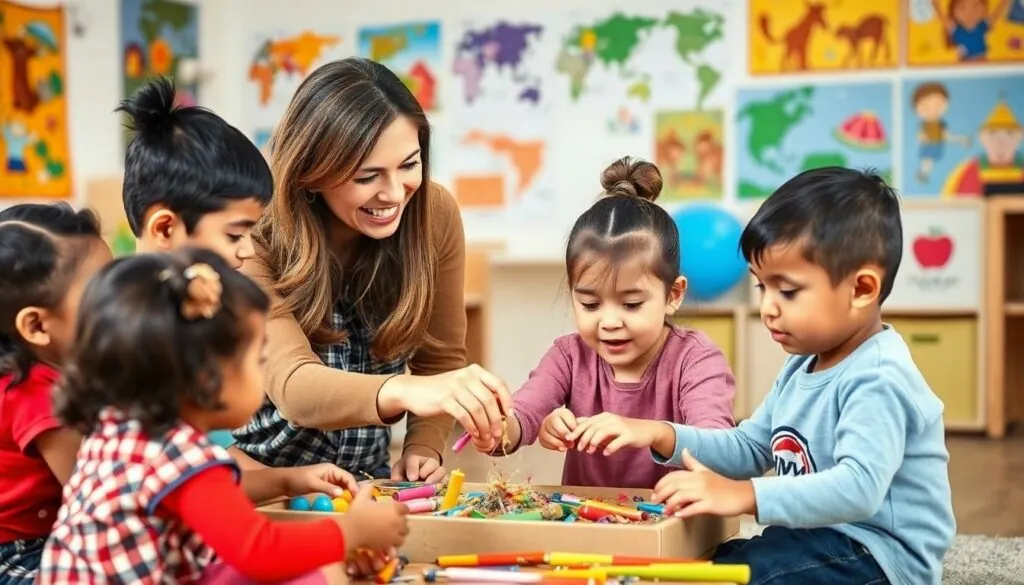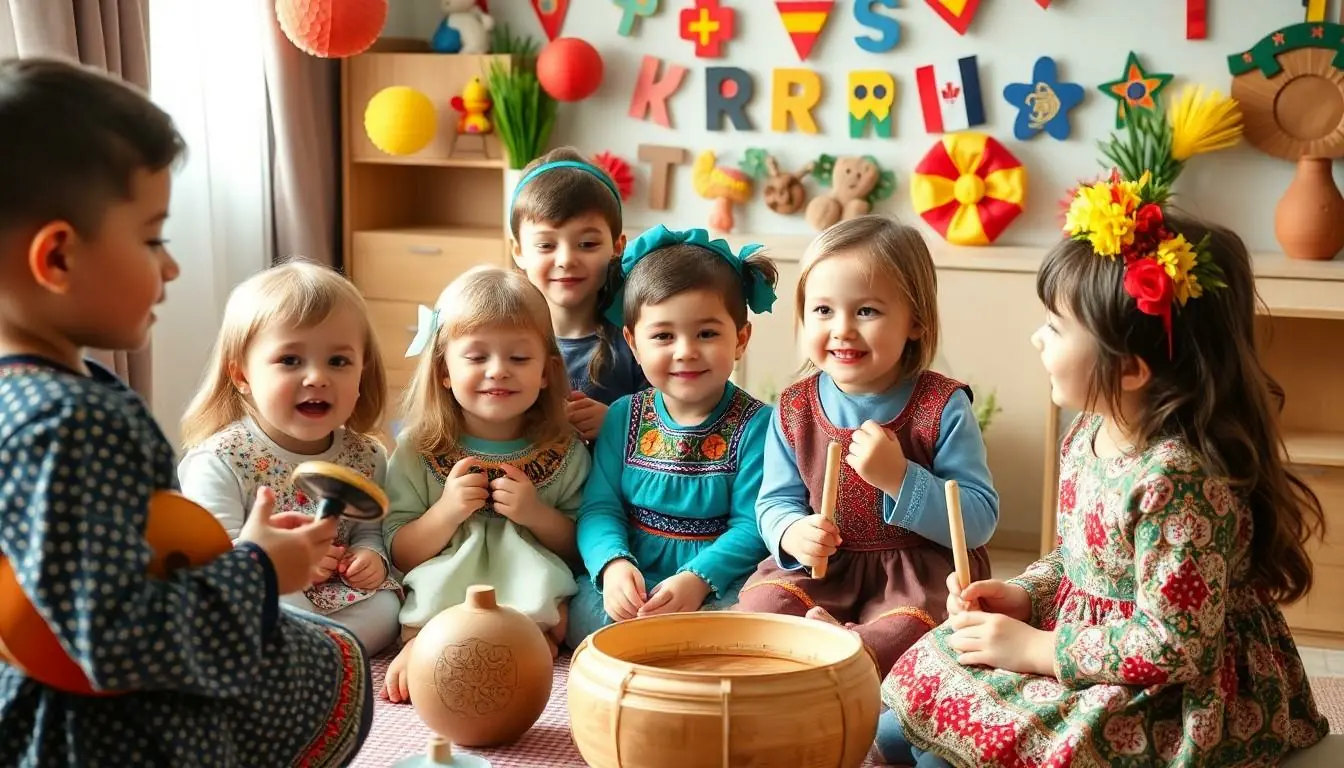Table of Contents
ToggleThe world of education has evolved beyond traditional boundaries and international preschools have emerged as vibrant hubs of early childhood development. These dynamic learning environments blend diverse cultures languages and teaching methodologies to create a truly global experience for young minds.
In today’s interconnected world parents are increasingly choosing international preschools to give their children a competitive edge. These institutions don’t just teach ABCs and 123s – they’re launching pads for future global citizens. With expert educators specialized curricula and state-of-the-art facilities international preschools offer an educational adventure that goes far beyond finger painting and naptime.
What Is an International Preschool
International preschools provide early childhood education with a global perspective. These institutions integrate multicultural elements into daily learning experiences while maintaining high educational standards.
Core Educational Philosophy
International preschools embrace a holistic approach to early childhood development through cultural diversity integration. The educational framework combines proven methodologies from multiple countries, such as Montessori principles from Italy, Reggio Emilia approaches from Northern Italy Waldorf techniques from Austria. Students engage in hands-on activities that promote:
- Cultural awareness through multicultural celebrations festivals art projects
- Multilingual development via immersive language experiences
- Global citizenship values including respect empathy cooperation
- Critical thinking skills through inquiry-based learning
- Social-emotional growth in diverse peer groups
Curriculum Differences
International preschool curricula differ from traditional programs in several key aspects:
| Traditional Preschool | International Preschool |
|---|---|
| Single language focus | Multiple language exposure |
| Local cultural context | Global cultural integration |
| Standard academic skills | International mindedness |
| Fixed learning approach | Diverse teaching methods |
The curriculum incorporates:
- Multiple languages taught by native speakers
- International teaching standards from recognized frameworks
- Cultural studies through art music literature
- Global perspectives in daily activities games
- Technology integration for worldwide connectivity
Essential elements include play-based learning cultural immersion programs experiential activities. Teachers create environments that encourage exploration discovery independent thinking across different cultural contexts.
Benefits of International Preschool Education
International preschools create distinct educational advantages through their comprehensive approach to early childhood development. These institutions foster essential skills that prepare children for success in an interconnected world.
Cultural Diversity and Awareness
Children in international preschools develop cultural competence through daily interactions with peers from diverse backgrounds. The classroom environment exposes students to multiple traditions, celebrations, customs, foods, music, art forms, and social practices from various countries. Students participate in cultural exchange activities, including international festivals, traditional dress days, and global cuisine experiences. This immersive approach helps children recognize, appreciate, and respect different perspectives while building cross-cultural friendships.
Language Development Advantages
International preschools provide optimal conditions for multilingual development during the critical language acquisition period. Students acquire language skills naturally through native-speaking teachers, structured language lessons, and informal peer interactions. Children develop stronger cognitive abilities, enhanced problem-solving skills, and improved memory capacity through exposure to multiple languages. Regular engagement in bilingual or multilingual activities strengthens neural connections, leading to increased mental flexibility and academic performance.
Global Learning Environment
The international preschool setting replicates real-world diversity through carefully designed learning spaces. Students engage with educational materials from different countries, use technology for virtual cultural exchanges, and participate in global project collaborations. The curriculum integrates international perspectives into everyday subjects like mathematics, science, arts, and social studies. Teachers incorporate global themes into lessons, helping children understand world geography, environmental responsibility, and global citizenship principles through age-appropriate activities.
Key Features of International Preschools
International preschools incorporate distinctive elements that set them apart from traditional early education centers. These features create an enriched learning environment focused on global perspectives and comprehensive child development.
Teaching Methods and Approaches
International preschools integrate multiple pedagogical approaches including Montessori hands-on learning, Reggio Emilia project-based exploration and IB inquiry-based methods. Teachers utilize cultural storytelling sessions for language development while incorporating STEAM activities through play-based learning. Daily routines include circle time discussions in multiple languages, guided discovery sessions and collaborative projects that develop critical thinking skills. Experiential learning takes place through cultural celebrations, cooking activities and art projects representing diverse global traditions.
Student-Teacher Ratios
International preschools maintain low student-teacher ratios to ensure individualized attention and optimal learning outcomes. Typical classroom configurations include:
| Age Group | Students | Teachers | Support Staff |
|---|---|---|---|
| 2-3 years | 8-10 | 1 | 1 |
| 3-4 years | 10-12 | 1 | 1 |
| 4-5 years | 12-15 | 1 | 1 |
These ratios enable teachers to monitor each child’s progress closely while providing personalized guidance during activities.
Learning Resources
- Multilingual books collections covering diverse cultures stories
- Open-ended materials for creative expression like blocks natural objects art supplies
- Digital learning tools tablets interactive whiteboards educational software
- Cultural artifacts from different countries including musical instruments traditional clothing games
- Outdoor learning spaces with equipment promoting gross motor development
- Dedicated areas for dramatic play science exploration sensory activities art projects
Choosing the Right International Preschool
Selecting an international preschool requires careful evaluation of multiple factors to ensure optimal educational outcomes. Parents benefit from a systematic approach that considers accreditation, facilities, and financial aspects.
Accreditation and Standards
International preschools maintain quality through recognized accreditation bodies like the Council of International Schools (CIS) or the International Baccalaureate (IB). Accredited institutions undergo regular audits to verify compliance with global education standards including curriculum implementation, teacher qualifications, and safety protocols. Licensed educators in these schools hold international teaching certifications from organizations such as Cambridge International or the International Primary Curriculum (IPC). Quality indicators include documented assessment methods, transparent reporting systems, and established emergency procedures that meet international safety requirements.
Location and Facilities
International preschools feature purpose-built environments designed for early childhood development. Modern facilities incorporate dedicated spaces for different learning activities: indoor play areas (75-100 square feet per child), outdoor playgrounds with age-appropriate equipment, and specialized rooms for art, music, and movement activities. Essential amenities include:
- Temperature-controlled classrooms with natural lighting
- Child-sized furniture and equipment
- Interactive learning centers with multimedia capabilities
- Security systems with controlled access points
- Sanitized eating areas and food preparation facilities
Cost Considerations
International preschool fees vary based on location, program offerings, and included services.
| Fee Type | Average Range (USD) | Frequency |
|---|---|---|
| Registration | 500-1,500 | One-time |
| Tuition | 15,000-30,000 | Annual |
| Materials | 800-2,000 | Annual |
| Transportation | 1,200-3,000 | Annual |
Additional expenses include uniforms, extracurricular activities, and special programs. Many schools offer payment plans, sibling discounts, and early registration benefits to make education more accessible.
Preparing Your Child for International Preschool
Preparing a child for international preschool involves meeting specific requirements and developing essential readiness skills. Parents can take strategic steps to ensure their child transitions smoothly into the global learning environment.
Age Requirements
International preschools accept children between ages 2 and 5, with specific age brackets for different programs:
- Pre-nursery programs accommodate children aged 2 to 3
- Nursery programs serve children aged 3 to 4
- Kindergarten programs enroll children aged 4 to 5
Each program level maintains distinct developmental milestones:
- Pre-nursery focuses on basic social skills, self-help routines
- Nursery emphasizes language development, motor skills
- Kindergarten incorporates pre-reading, pre-writing activities
Documentation required for enrollment includes:
- Birth certificate
- Immunization records
- Previous school records (if applicable)
- Passport or residency documents
- Medical clearance forms
Social and Emotional Readiness
Children demonstrate social readiness through specific behavioral indicators:
- Separating from parents without excessive distress
- Engaging in parallel play with peers
- Following simple instructions from adults
- Communicating basic needs verbally
Emotional maturity markers include:
- Managing transitions between activities
- Sharing toys with other children
- Expressing emotions appropriately
- Self-regulating during structured activities
- Taking turns during family activities
- Participating in group settings
- Using words to express feelings
- Completing simple tasks independently
Conclusion
International preschools represent a transformative approach to early childhood education that’s reshaping how children learn and develop. These institutions create dynamic environments where young minds flourish through multicultural experiences multilingual exposure and innovative teaching methodologies.
The blend of global perspectives quality education and cultural immersion provides children with essential skills for success in our interconnected world. Parents who choose international preschools invest in their children’s future giving them the foundation to become confident adaptable and culturally aware global citizens.
As education continues to evolve international preschools stand at the forefront of preparing the next generation for an increasingly connected and diverse world. Their comprehensive approach to early learning sets a new standard in childhood education that reaches far beyond traditional academic boundaries.





